01: The fate of tax incentives for the energy transition
An exploration of Trump’s policy agenda and the hurdles it may face

“The First 100 Days” is a podcast that explores the legal, regulatory and policy implications that the new US administration may have on global businesses across industries. Hosted by Executive Committee member Eric Leicht, the series features our lawyers’ views on the topics that matter most to our clients.
An exploration of Trump’s policy agenda and the hurdles it may face
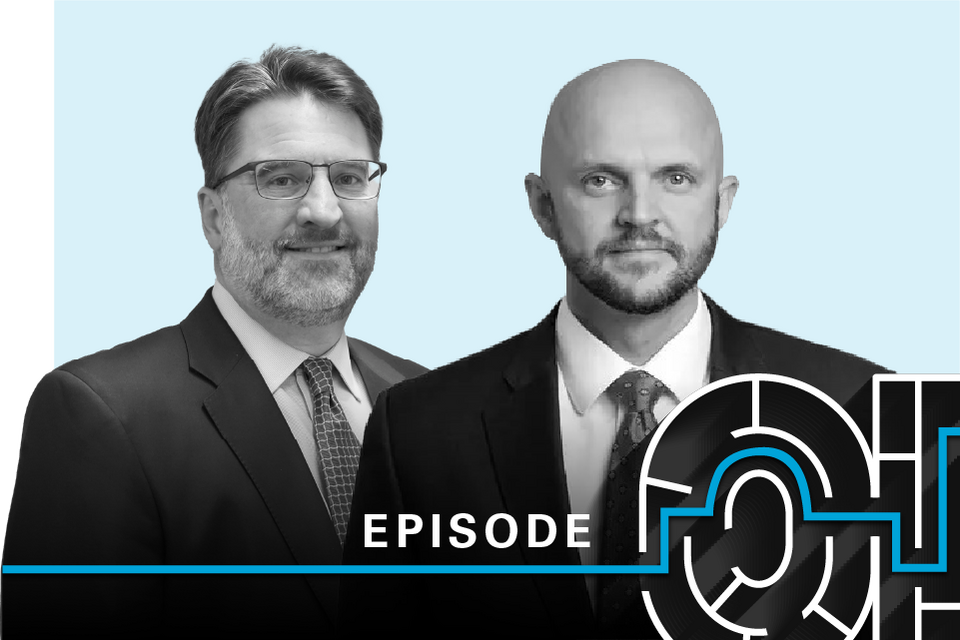
Will tariffs help rewrite the rules of international trade?
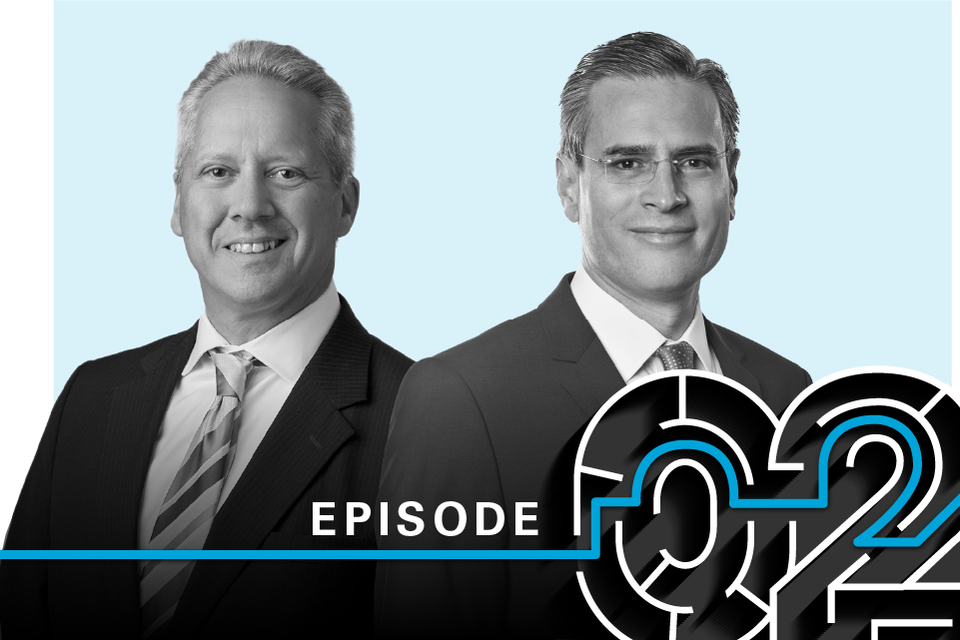
Speed bumps on the road to a lower carbon future
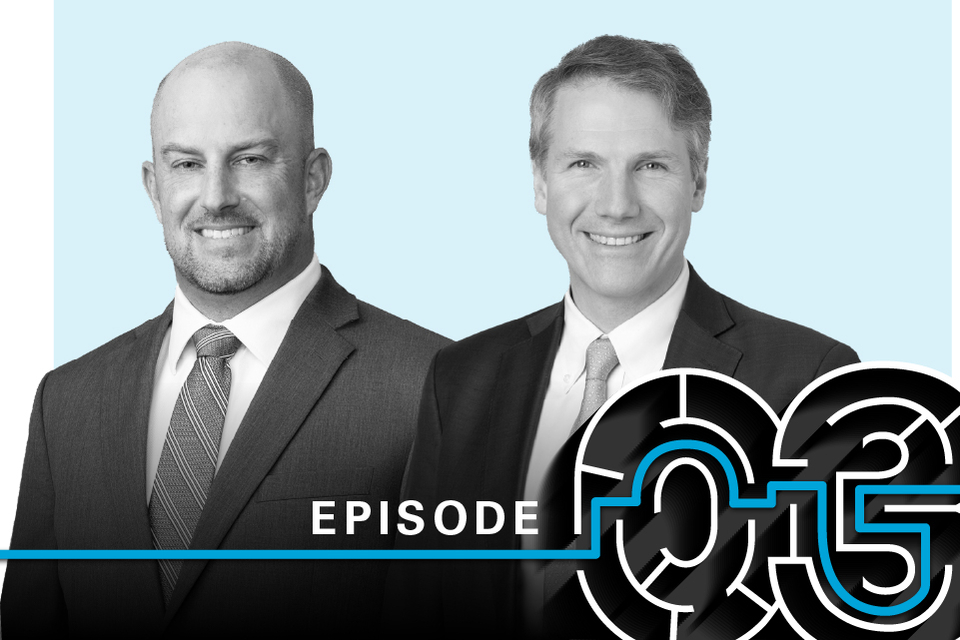
Economic tools advance US foreign policy and national security goals
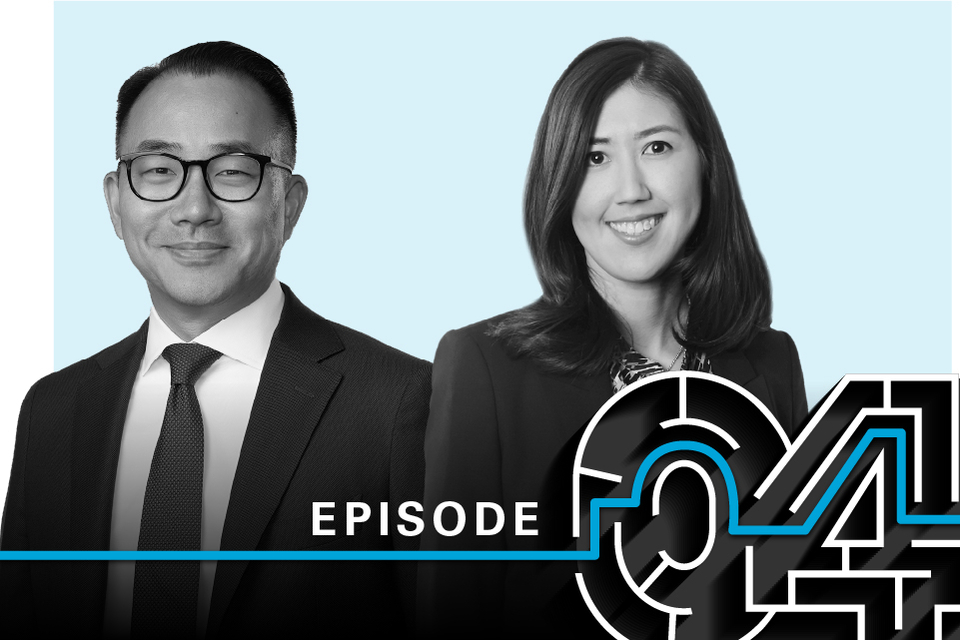
How “America First” policies may impact mineral and hydrocarbon supply chains

Some, but not all, investors may face a friendlier climate
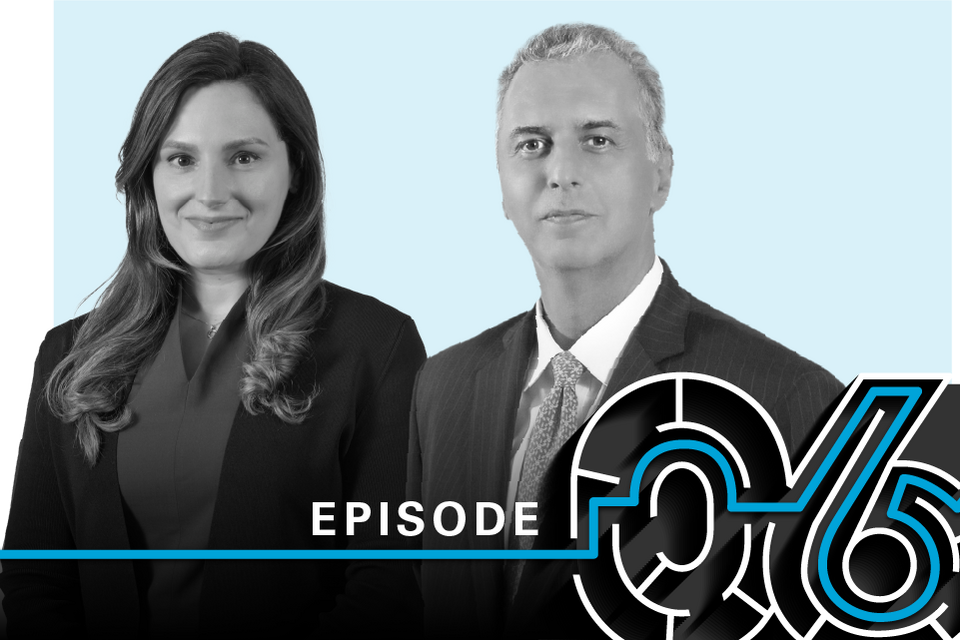
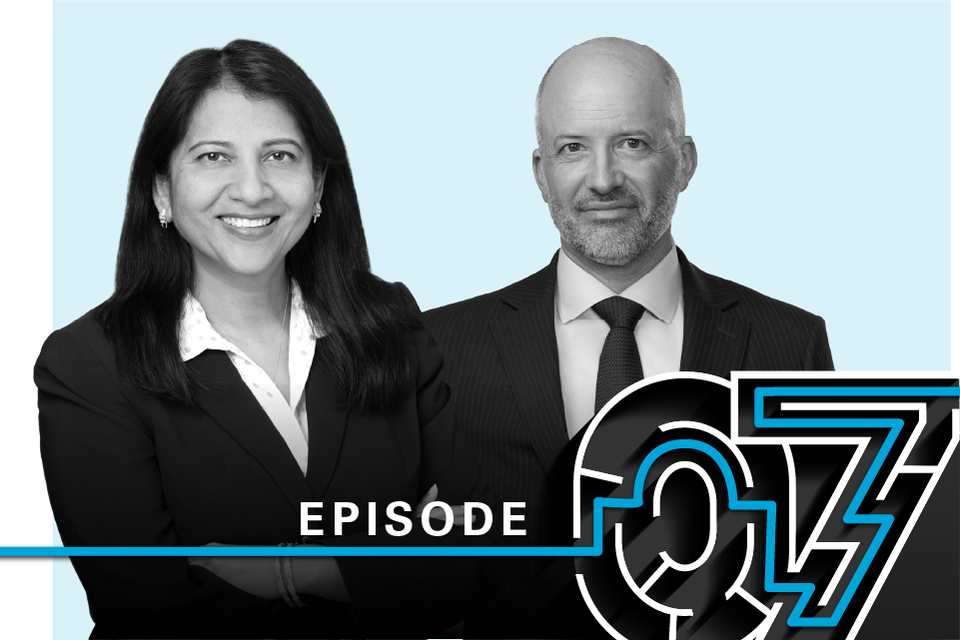
Managing the legal impacts of a new US administration
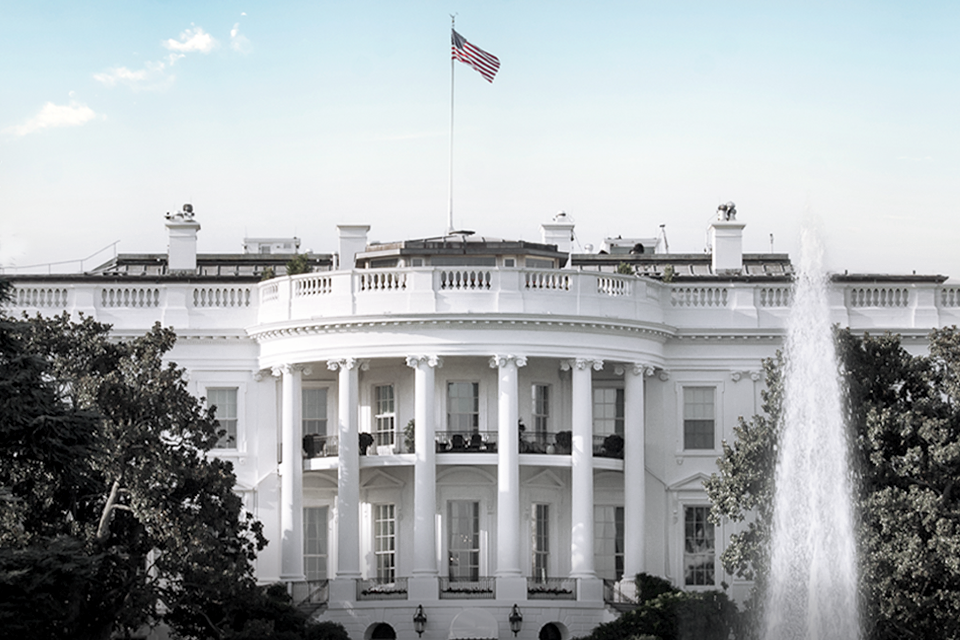

Charting the course for US innovation
Listen and subscribe
This episode features partners Mark Davies and Sapna Palla in a discussion about the new administration’s likely approach to IP law. Mark focuses on appellate litigation for technology companies. Sapna handles all types of litigation for clients in the life sciences sector. Topics covered in this episode include developments at the US Patent and Trademark Office, possible implications for patents that rely on AI, potential tariffs on pharmaceuticals, trends in patent litigation and the fate of key bipartisan patent reform bills introduced during the Biden administration.
Listen now
Listen and subscribe Apple Podcasts | Spotify | YouTube Music | Amazon Music
Eric Hello, and welcome to "The First 100 Days," a podcast from White & Case that features our lawyers' views on the likely regulatory, legal and policy implications of the new administration on businesses operating across the globe and in various industries. I'm Eric Leicht, a member of the Firm's executive committee and a partner in our Debt Finance practice. Today, I'm joined by Sapna Palla and Mark Davies, who are intellectual property litigation partners. Sapna is based in New York and Mark in Washington, DC. Sapna, Mark, can you give us a quick description of your practices? Sapna Sure. Thanks, Eric. My practice focuses on life sciences, mainly representing pharma, biotech, medtech clients. And I handle all types of litigations for them, whether it be brand versus brand or brand versus generic. And I also counsel them on the lifecycle of their products, on all patent matters as well as advising them on pre-litigation matters. I also help clients in the trademark and copyright space, advising them on litigation matters, handling litigations for them and dealing with them across a variety of industries. Mark So, thanks, Eric. I focus on appeals. I lead the practice in the high-tech sector, doing work for companies like Apple and Google and Amazon and Snap. I grew up really at the Department of Justice in the Civil Appellate Branch. I've done over 50 appeals. I do have now a good sense of what's going on in the appellate courts. And what I'm focusing now is a lot of artificial intelligence and the novel issues that are raised today, and also the global influence that that and other technology companies are now facing. Eric Thank you, both. Let's set the scene here. When you look at the sweeping policy changes making headlines in the first few months of the new Trump administration, intellectual property policy hasn't gotten a ton of attention, although it's certainly linked to many of the topics we've discussed on this podcast. So, before we get into some of the issues here, can you give us an overview of how IP policy fits into Trump's whole "America First" way of thinking? Sapna What's really key there is the huge focus on protecting innovation and securing the US's lead in the technology space. And in particular, as Mark was mentioning, on the AI space because there's a lot happening there. And if you look at the "America First" trade policy memorandum that was issued on Jan. 20, 2025, that came out and specially what it has tasked the Commerce secretary with is to make sure that American IP is protected across the globe and specially given equal effect in places such as China. Because what the administration is really trying to do is make sure that to the same extent that, for example, the PRC nationals get rights in the US to obtain IP, to enforce their IP, that that same level of protection is granted to US companies as they go into Asia and in particular in China. And so, the idea about "America First" and the fact that IP should be used to keep the US ahead, technologically, has become very important. Mark And Eric, to add another dimension to what we're talking about here. There's a tweet going around. It says, quote, "Delete all IP law." And that is part of at least some people's rhetoric in the "America First" domain. And now, there are other people, certainly, who consider themselves part of "America First" that, as Sapna was just saying, think that that's not what they're saying. They want strong IP, and we'll get to that. But there is this tension you often see in movements, between those who really want strong IP and those who are worried about strong IP. Eric And what would be the basis for somebody suggesting that all IP law should be deleted? How is that beneficial to US companies? Mark Well, I think the view would be they should just compete on the merits, that if you have a great invention, the market will reward that. And the law and litigation is just not the way to proceed. Sapna And to add to that, I think what's interesting in terms of the folks who are taking this type of view is that they had large companies that actually benefited from very strong IP rights as the companies were growing. And now with AI and trying to make sure that they can go out in the market in many ways without being impacted, they're taking a somewhat opposite view. And so, it's really interesting because, as we look at the whole landscape, when we talk about our clients, it impacts everything from patent protection to how they license and collaborate and monetize their assets to how they litigate in this space. And so, it just makes the whole landscape pretty uncertain. Eric It's interesting that some of the big companies have a first-mover advantage, having benefited from some of the IP rights, and now have deep pockets and in some respects changing the rules now doesn't necessarily disadvantage them. I'll move on to my next question. Across agencies, Trump appointments have represented a major shift from the Biden administration's priorities. I'm wondering if that's also the case at the Department of Commerce, which oversees the US Patent and Trademark Office, also known as the USPTO. Can you first give us some background on the work of the USPTO before we talk about some of the changes there? What specifically is it tasked with? Mark So here's a number, Eric, to keep in mind. How many patents do you think were issued in 2024? They issued 300,000 patents in 2024. There were 700,000 applications in 2024. And there's a backlog of 520,000 patents. So, just to get you the scale of what we're expecting the USPTO to do, the volume is tremendous. Sapna And just to establish what the USPTO's mandate is, they're responsible for granting US patents and registering trademarks, and their mission, which ties in with the whole "America First" desire and policy, is to drive US innovation, internationally, in the US, and ensure global competitiveness. Eric So you hear budget cuts, layoffs, reorganizations at federal agencies. They've been big themes of this administration. What's happening at the USPTO now? Mark One of the unique things about the patent office is that it's self-funded, that the fees that it charges cover its expenses. And how that plays out we just don't know. And so, there's talk of restricting agency resources, but there's also talk of solving the backlog. Sapna There's also been leadership changes, as happens with every administration. So, Howard Lutnick, who is now the Commerce Secretary and oversees the USPTO, it's interesting that he comes from a background of having himself been an inventor on over 400 patents and has built companies that rely on these patents and have litigated heavily in this space. So, he's talked very much about improving efficiency at the patent office, strengthening the IP system. And that is juxtaposed with the idea that there have been hiring freezes. So, it remains to be seen how the desire to have efficiency will actually work with the fact that the USPTO forces are being reduced a bit. And John Squires, who's now been nominated as the director of the USPTO, also comes from a pretty significant IP background, having worked in-house as well as at law firms. He, for example, managed at Honeywell a portfolio of over 1000 patents. He founded the IP department at Goldman Sachs. And so, I expect that we'll see a push for a number of changes. Eric It's hard to see how that personal history won't end up driving policy on some basis. So, looking at changes or possible changes to the USPTO, what are you hearing from clients in terms of their concerns or their hopes and aspirations? Sapna Everyone, for years and years actually, has been discussing how do we make the USPTO more efficient? And now, while there's a desire to do that, there's a lot of concern about loss of expertise. For example, if we're going to lose examiners that have been there for years, have developed expertise in particular types of patents that they look at and work with patentees on granting, we might be losing some of that expertise. I'm mainly representing the patentees. The fact that there's a desire to be more pro-patent and make sure that there are more patents obtained, that is generally viewed as a good thing. But at the same time, if we have some of these organizational challenges, then how do we make sure that the patents that are granted actually are of the level and quality that clients would want? One thing I'd like to add is that during the first Trump administration the invalidation rate. So that means patents that are already granted and somebody challenging them and then those patents are invalidated. That rate under the first Trump administration was around 51 percent. Under the Biden administration, that went up to 71 percent. So, that was sort of seen as less pro-patent. And the hope is that now maybe we'll have less invalidation from the patentee side. But it remains to be seen how all of this is going to actually play out, and one of the things that Mark and I will be doing is making sure that our clients are thinking very carefully about whether they want to start challenging patents at the PTAB first or go to court, and how you need to position all of that, given what's happening at the USPTO right now. Mark The interesting thing about who is now at the Department of Commerce is the patent background there. I mean, it's one thing for the director of the PTO to have a patent background. You would expect that. But what you now have is a department level official interested in these issues, which is going to affect how the United States manages its innovation policy. Because whenever you talk innovation, there's so many agencies that want to get involved. You know, you want FDA, you want Department of State. To have now, not just the director of the patent office talking about patents, but the Department of Commerce leadership talking about patents is going to shift the dynamic with how the government and DC works. Eric Is it possible that tech could be deployed to enhance efficiencies and reduce some of the delays? Sapna I think there's been a lot of talk about using AI. So, when a patent is being prosecuted in front of the USPTO, the examiners will look to see what came before. And that is termed as prior art. And there's a lot of talk about the fact that tech and AI could be used to mine in a more efficient way, what came before and provide better information to the examiners. And I'm sure there are other tech innovations that could be used to make not only the job of the patent examiner quicker and more efficient, but also perhaps lead to more quality patents, where they haven't missed information that could have been caught but was not because we didn't have tech efficiency. Maybe some of that might contribute to having a smaller USPTO examiner task force but with better results. But we'll have to see. Eric That all makes sense. And this is a good segue to talk a little bit more about artificial intelligence. The Trump administration has pledged to take a pro-AI stance that differs from the more cautious approach of the Biden administration. Mark, can you tell us how the Trump administration's approach toward AI impacts IP litigation matters for companies? Mark We don't know. We can make arguments. But I don't think we know the future here. But let's just give an example. If somebody has an invention in a patent and they put the words "machine learning artificial intelligence" into the claims, into the part of the patent that is teaching the public, what level of scrutiny is going to be applied to that claim? What does the legal system do with that patent? And the question legally, it's under two Supreme Court cases, one called Alice, one called Mayo. It asks: Is this patentable subject matter, and is there an inventive concept? Well, that's pretty abstract. And so, a lot goes into this inquiry. How do you fit those two terms into what's into the patent? And I think what might happen if the current environment is pro-patent, as Sapna was saying, is there's going to be a thumb on the scale to say, now that's a good invention, that's okay. And I think maybe in the prior environment, there's more skepticism to that sort of patent. Sapna And just to add to that a little bit, the Trump administration did revoke two pretty important executive orders that the Biden administration had put in relating to AI. So, the Trump administration revoked the executive order that related to the safe, secure and trustworthy development and use of AI and another executive order that was aimed at eliminating regulatory barriers to American leadership in the development of AI. And so, I think there's perhaps going to be less regulation around AI, and an attempt to drop barriers around some of these inventions that relate to AI. So, as Mark was saying, the Alice and the Mayo case, where if it was an invention that came about as a result of something that was not very innovative in terms of how technologies and computers have been used, you would not get a patent around that. With the relaxation of that standard, which we predict might happen under this new administration because of the very strong focus on AI, we might be able to shift some of these standards a little bit. And there might be more of a push to have patents that incorporate AI elements that we may not have been able to obtain in the past. We're going to have to see how we can take advantage of some of that in order to make sure that our clients' most important inventions are protected. Because all of them are now considering how they can use AI, right? And it definitely provides immense advantages. But we have to see how we capture that and then ultimately how that's challenged in litigation, because those challenges are still going to come on the litigation front where there's going to be this fight about whether this patent that relies on AI in a variety of ways is actually entitled to have that patent protection or not. And then also when we talk about patent infringement, when we are considering products or drug discoveries that are protected by patents that have AI elements, how do you assess how much of that is, sort of, the background that led to that invention versus a pure AI invention? And so, I think we'll see a lot of fights on that on the litigation front as well. Eric So just to reframe the question a bit, Sapna, in the life science space what impact do you see for your clients? Sapna I actually see some beneficial impacts, especially on the drug discovery space for our pharma and biotech clients, if we're able to get some more innovations that rely on AI patented. Especially in the medical diagnostic space, we've had a number of challenges over the years where patents have been invalidated. And I think that with more adoption of AI and more support for AI-related inventions, I think our clients are actually going to benefit and be able to protect some of those inventions. Mark I had a thought—very curious in your reactions to this. So, just last year, the CEO of Anthropic wrote about the positive developments that AI may be bringing us. There's often, certainly among lawyers, a lot of worry about AI and the risks, but it is worth spending some time, I think, on the benefits of AI. And he focused quite quickly on life sciences. And he predicted that most diseases will be cured in 12 years, that we are doing 50 to 100 years of scientific research in 5 to 10 years. And when you hear that, and I think many of us say, well, that's just ridiculous. Why would anybody say that? But the CEO of Anthropic—he's somebody to take seriously. Eric Those are some pretty astonishing statistics. Thanks for sharing, Mark. Tariffs are another topic that we talk a lot about on this podcast. And recently Trump has pledged to impose tariffs on pharmaceuticals. Can you tell us a bit about pharmaceutical supply chains? Where are these drugs or their components coming from? Sapna This is a topic that keeps changing month by month. So, when we look at the supply chains, on the pharmaceutical side at least, a lot of the APIs or the active ingredients are coming from countries like China and India. And given that competitiveness with China is such a big focus of this administration, it's not surprising that there's been some change in views about pharmaceuticals and whether they're going to be subject to tariffs or not. And so, the supply chains, which are almost always global, are going to be heavily impacted for clients that are in the pharma space. But equally in the biologic space. And then also in the medtech space because if you think about, for example, a glucose monitor, right? It has so many different components, and a lot of those components are coming from various parts of the world. And so, I've had conversations with clients about this. There's a lot of concern about the tariffs in general, but also how do we shift our IP policies and our IP strategies around this because they already have licensing agreements. They have certain royalty streams that are dependent on how they're now going to be impacted by tariffs, and there's a lot of discussion about how do they pivot around some of this and also manage the risk. And then, just in terms of patent protection, it impacts all of that, right? Eric And tell me about the supply chain here. Is this just about having lower pricing coming from a particular ingredient that comes from China or India? Or is it about the rareness of some of the ingredients or the efficiency of the processing? We did a previous podcast around critical minerals, many of which come from China. They're processed in China. It's both cost and access that are driving it. What's the impact in the pharmaceutical world? Sapna I think it's less about the rareness of the materials and more about the cost and efficiency of the processes that have been developed over the years in some of these parts of the world. And frankly, we don't have that capability in some cases in the US because these companies have just not planned for how they work on these products in that way. Mark So, Eric, one of the unique features of the American patent system is the role of the jury. And the emotions around the tariffs and the questions that are motivating those tariffs, I could see influencing the jury in one way or another. Is it a David and Goliath? Who really invented something? Eric So I assume tariffs would result in higher prices for consumers, generally speaking. But how would they impact your clients and their IP if at all? Sapna I think some of that might play out in the licensing context because they have certain deals, they're getting certain materials over. And then the question becomes, you know, how is all of that going to be priced out? Eric Turning to a different line of questions, can you bring us up to speed on where things stand in terms of patent litigation and litigation funding today? Mark So, to set the stage for discussing litigation funding—the Constitution talks about inventors and the right to protection for their discoveries. And if I come up with something inventive and it's in the space where there's a big company, and they're copying my invention, how am I supposed to get what the Constitution guarantees me? One solution is to get funding, to get some resources to go after that unfairness. And so, in 2017, there was a $2 billion award. It was against Intel, and it was largely funded by a company called Fortress that was behind a company called Unilock. And just to fast-forward to today, as Sapna mentioned, there's the likely next director of the patent office, John Squires, and he helped found Fortress. And so, you can see that this sort of topic is now going to move even more front and center. And there are a couple issues, like one is transparency, like should you have to tell the court that you're being funded? Control, like does the third-party funder have to be in control, in which case they really should be participating in the litigation? And the one that I'm seeing the most, and I know judges are seeing the most, is the question of settlement. A lot of these agreements set certain thresholds before the settlement is done because to make it worthwhile for the investor, you have to say, well, if we're not going to get more than 10 million, we're not going to settle. But if the relevant people aren't in the room, that settlement can get quite difficult. Sapna And to add to that, just to give some examples of how that would directly impact our clients, there has been an increase, I would say in the last 4 or 5 years, where we're seeing in the life sciences space an increased level of litigation funding. So, in the tech space, I think people are familiar with patent trolls and that type of litigation where there are companies suing because they have a suite of patents but without a product and trying to challenge patents of large companies. But we've been seeing that happening more so in the life sciences space as well. Not from, per se, patent trolls but, for example, universities or research institutions that did not have the funds or the capability to challenge infringement of some of their IP. Not because they weren't using it in some way, but just because they've actually spent a lot of time and money in developing this IP, done a lot of research around it, but just didn't have the funds to go after certain targets that they thought were infringing their IP. So, more universities have come into the fray, more research institutions, smaller biotech and medtech companies, diagnostic companies. And so that does change the litigation landscape in a number of ways. Because of that increased level of different types of entities trying to figure out how they can monetize their IP and having that funding to back them up. Eric Can you give me a bit of a mini history on what's been going on in the patent litigation space over the past few administrations? Just kind of broad-brush including the first Trump presidency. Mark The most interesting piece is that there's a district court in Delaware who's really taken the lead in terms of establishing local rules to require the transparency that we're talking about, to require people to show up in court. And I think there was a sense for a moment that that was going to take off and be copied and mimicked in courts around the country and maybe even wind up in the federal rules. And it hasn't happened. There's a federal rule that's being proposed, and it's really just been tabled. And so, it feels like we're kind of in this equipoise where people may say they're favoring transparency, they're favoring control, they're favoring settlement shifts. And it's really just sort of flat. Eric So how and why has patent litigation become such a booming business of late? And are there specific issues that are really driving this? Sapna I would say it is because IP increasingly over the years has really developed as an asset for companies. And you're seeing some of the most successful companies in the US and globally just really spending a lot of thought and resources in developing huge portfolios of IP. And the recognition that not only does that protect you, but it also allows you to enforce your IP against competitors. And so, the competitor versus competitor wars have really maximized that as a way to stop competition. Mark So, Eric, I have a three-part answer. So, the first thing is damages. The complaints that you see ask for 500 million. The experts come in and talk about big numbers, and of course that's one reason why patent litigation is so big. There's just so much money there. The second is the jury, as I mentioned before, and the unpredictability that that gives to the process. And then the third thing I would mention is sort of the center of the United States, that if you win on your patents here, then you're in pretty good shape around the world. If you beat the patents here, you're in pretty good shape around the world. And the last few months, each one of those has kind of shifted. So, the Federal Circuit recently went and sat as a full court in a case involving Google to try to bring damages under control. And I think they are getting it under control. I have talked to clients who really felt like things were getting pretty predictable, in the US at least. And what you're seeing now is the assumption it's getting unsettled. Eric You know, hearing you both talk, Sapna – life sciences, Mark – tech, two industries that have just had explosive growth in the US over the last decade plus. Now, I see why there's little surprise that patent litigation has boomed over the last decade. All makes sense. I wanted to turn to some patent reform bills. I understand that three bipartisan patent reform bills were introduced before the new administration took office. And taking these one by one, what are these bills, and what does each one aim to change? Sapna Just to start out, while these have been bipartisan bills, I think the thing to note is that they're all pretty much patentee-friendly. So, one of the bills is the Patent Eligibility Reform Act, which we call PERA. And what it seeks to do is, you know, the patent eligibility standard that we had talked about, under the US Supreme Court's Mayo and Alice decisions, which kind of made it a little bit harder to get a patent and easier to challenge a patent based on patent eligibility. What this bill aims to do is to reduce that restraint and make it a bit easier, which is why I said it's more patentee-friendly. The second act is what we call the PREVAIL Act. It's the Promoting and Respecting Economically Vital American Innovation Leadership Act. And what this act aims to tackle is how the process before the Patent Trial and Appeal Board at the USPTO is carried out, and it is pro-patentee because what it is attempting to do is change the standing requirement for the folks that are challenging patents before the USPTO, so that it makes it harder for petitioners to be able to do so. And it also increases the burden on the petitioners. And then the final act is the RESTORE Act, which is Realizing Engineering, Science, and Technology Opportunities for Restoring Exclusive Patent Rights Act. And what this intends to do is make it easier for patentees to get injunctive relief before a court. And I think folks are probably going to focus on the PERA Act, which really gets to the heart of what patent is eligible for issuance or not. Eric So, as we come close to the end of this podcast, a couple final questions here. You've both seen a number of administrations come and go. How would you characterize the changes occurring and expected to occur during this administration? Are they going to be transformative for business and your clients or might they actually revert to a bit more business-as-usual approach? Mark I think in DC, certainly, we've seen before that change is really hard. And it's certainly true that a lot of change now is being attempted and implemented to a degree that's surprising many people. Whether it will actually lead to concrete change on the ground and the way patent litigation is conducted or the way patents are evaluated, I just think it's too soon to tell. Sapna And some of these changes take longer to implement. And so, if we look back at what we saw from the Biden administration, actually the former USPTO director, Kathi Vidal, was able to achieve quite a bit in four years. And so, there's a chance that some of the rules around how the USPTO actually works and how the PTAB is going to be organized, there might be some movement on that quicker because I think that's a little bit easier to control. Eric Thanks. And then finally, 30 seconds top takeaway for your clients from each of you? Mark The number one takeaway, and our conversation has sort of solidified this for me, is that the district courts are going to become even more central to patent litigation. The instinct over the past few years has been to, sort of, shy away from district court litigation and use the agencies, use the patent office, use the regulations, and really sort of scale back district court as much as possible. Sapna Companies and clients are also going to have to weigh quicker whether they bring a challenge before the USPTO versus go to the court because, as I was mentioning earlier, there's some movement that's going to happen, possibly at the USPTO, where earlier the USPTO had less discretion in terms of whether to institute a challenge or not. And so, there's going to have to be more thought over going into the USPTO earlier, like an earlier challenge than people have been used to planning as part of their strategy. With the speed with which this administration is moving and implementing things and putting in place executive orders or revoking executive orders, I think, more than ever, we need to monitor for our clients these rapid shifts locally and also how they impact our clients internationally. Because there are so many things at play. As we talked about the tariffs, about the trade policies, all of these coming together is really going to impact how our clients need to position themselves. And then I think the other overall takeaway really is this whole movement toward AI and how AI is going to be part of the IP systems, the patents, the way in which our clients are operating. There are many advantages, as well as some risks, that our clients are going to have to consider in that regard and how they tie with their IP policies and how they operate in the IP space. Eric Mark, Sapna, thank you both for joining today. With all the other developments under this administration, IP policy may not be getting the most attention, but it's clear from our conversation today that we could see meaningful change in the approach to patents and a real impact on the future of American innovation. Mark, I'm crossing my fingers for the eradication of disease in 12 years. Thank you both. Thanks for listening. Please subscribe in your preferred podcast app so you don't miss future episodes. Until next time.
White & Case means the international legal practice comprising White & Case LLP, a New York State registered limited liability partnership, White & Case LLP, a limited liability partnership incorporated under English law and all other affiliated partnerships, companies and entities.
This podcast is prepared for the general information of interested persons. It is not, and does not attempt to be, comprehensive in nature. Due to the general nature of its content, it should not be regarded as legal advice.
© 2025 White & Case LLP